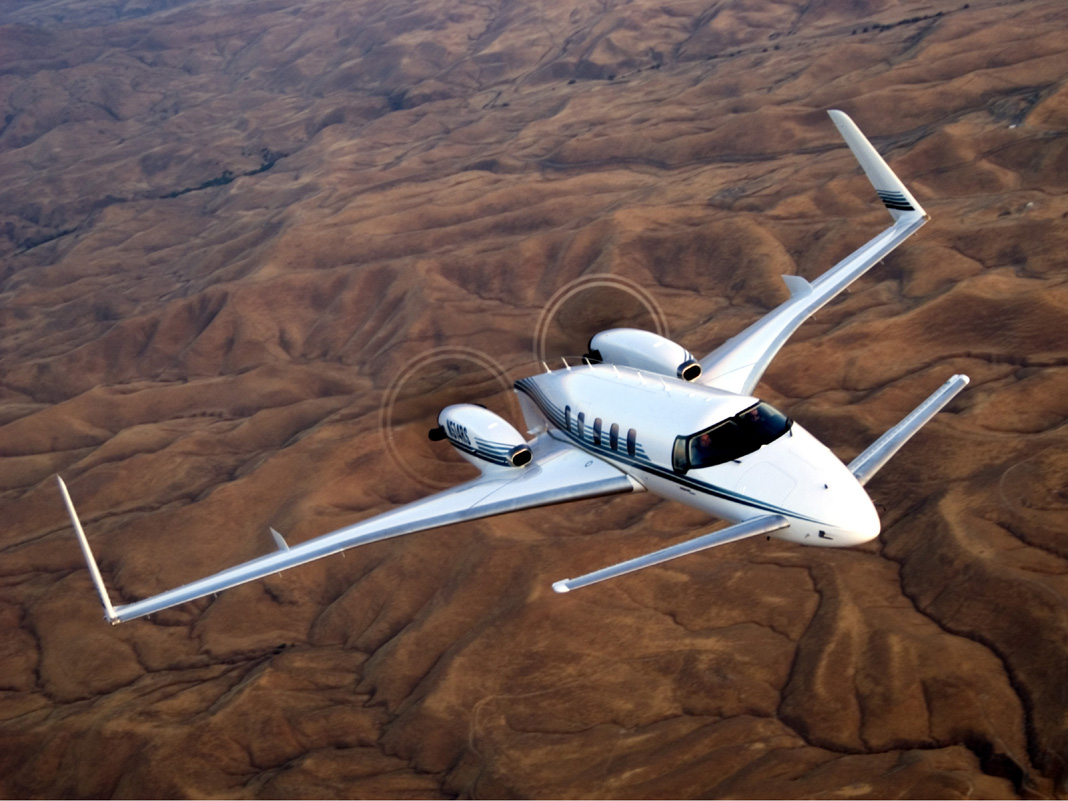Beechcraft Starship




The Starship is noteworthy for its carbon fiber composite airframe, canard design, lack of centrally located vertical tail, and pusher engine/propeller configuration.
Carbon fiber composite was used to varying degrees on military aircraft, but at the time the Starship was certified, no civilian aircraft certified by the US Federal Aviation Administration had ever used it so extensively. Beech chose carbon fiber composite for its durability and high strength-to-weight ratio. According to Beech, the Starship weighs less than it would have if it were built from aluminum. Nonetheless, the empty weight of production aircraft exceeded the target by several thousand pounds.
Beech studied several configurations before settling on a canard configuration in early 1980.[11] As configured, the Starship is difficult to stall—the forward surface stalls before the main lifting surface, which allows the nose to drop and more-normal flight to resume.
A traditionally located vertical tail would have transmitted propeller noise into the airframe. In its place, directional stability and control is provided by rudders mounted in the winglets (Beechcraft called them tipsails) at the tips of the wings.
Mounting the engines so that the propellers are facing rearward, pushing rather than pulling the aircraft, has the potential of a quieter ride since the propellers are further from the passengers and because vortices from the propeller tips do not strike the fuselage sides. However, the propellers are operating in a turbulent airflow in the pusher configuration (due to airflow past the wings moving aft in vortex sheets) and high-velocity exhaust gasses are discharged directly into the props, thus the resulting external propeller noise is more choppy and raucous than otherwise would be the case.
General characteristics
- Crew: One
- Capacity: Six
- Length: 46.1 ft (14.1 m)
- Wingspan: 54.5 ft (16.6 m)
- Height: 12.9 ft (3.9 m)
- Wing area: 281 sq ft (26.1 m2)
- Empty weight: 10,085 lb (4,574 kg) standard empty weight
- Gross weight: 15,010 lb (6,808 kg) max ramp weight
- Max takeoff weight: 14,900 lb (6,759 kg)
- Fuel capacity: 565 gallons, or 3785 lbs.
- Powerplant: 2 × Pratt & Whitney Canada PT6A-67A turboprop, 1,200 shp (890 kW) each
- Propellers: 5-bladed McCauley, 8 ft 8 in (2.64 m) diameter
Performance
- Maximum speed: 385 mph (620 km/h; 335 kn)
- Cruise speed: 353 mph (307 kn; 568 km/h)
- Stall speed: 112 mph; 180 km/h (97 kn) max weight with flaps retracted & idle power
- Minimum control speed: 108 mph; 174 km/h (94 kn) flaps retracted
- Range: 1,576 mi (1,370 nmi; 2,536 km)
- Service ceiling: 41,000 ft (12,497 m)
- Rate of climb: 2,748 ft/min (13.96 m/s)
- Wing loading: 53 lb/sq ft (260 kg/m²)
- Power/mass: 6.2 lb/shp
Comments
Post a Comment